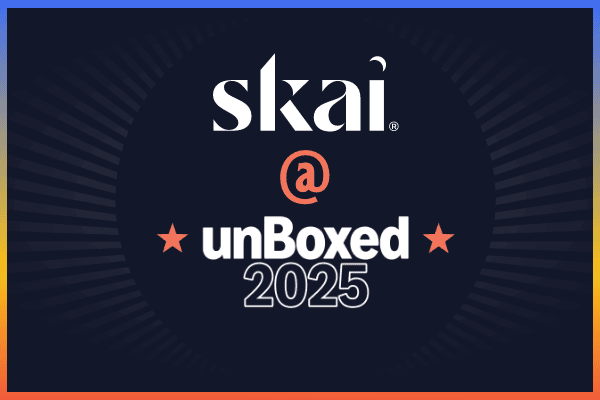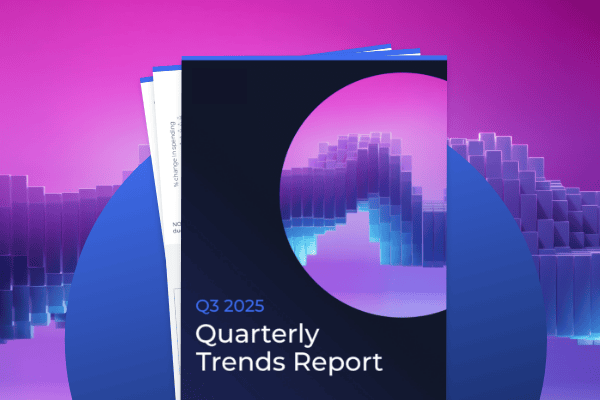Summary
ShopAble in the Park 2025 highlighted how retail media has evolved from hype to maturity, with 90% of advertisers naming it their top digital channel. Experts from dunnhumby, GroupM, Dell, and dentsu emphasized that growth is far from slowing, but success now depends on standardized measurement, cross-functional teams, and full-funnel strategies. Instead of fearing a bubble, brands should focus on sustainable retail media growth through transparency, innovation, and operational excellence.
Last updated: October 30, 2025
ShopAble in the Park 2025 brought the energy of Skai’s flagship US event to London. This reimagined, festival-style gathering of commerce media leaders took place at Shoreditch Gardens, delivering fresh ideas, industry-shaping conversations, and plenty of inspiration. With topics spanning AI, omnichannel strategy, and the future of retail media, ShopAble in the Park marked a pivotal moment for the UK commerce media community.

While over 200 retail media networks now compete for advertiser attention and brands demand greater transparency and ROI proof, industry leaders see this scrutiny as a sign of maturity rather than a bubble that’s about to burst. With Amazon alone forecasting growth from $66 billion globally this year to $90 billion by 2027, the real challenge isn’t survival but sustainable growth through standardization, measurement, and organizational transformation.
Session host David Sequeira, EVP Strategy at Skai, posed the provocative question that’s on many marketers’ minds: with retail media now second only to TV in ad spend for many brands, are we witnessing growing pains or a bubble about to burst?
Panelists:
- Julie Jeancolas, Head of Products, dunnhumby
- Jason Wescott, Global Head of Commerce Solutions, GroupM
- Charlotte Coxhead, Europe AMZ Marketing Consultant, Dell Technologies
- Matt Higgins, Managing Partner Addressable Media & Total Commerce, dentsu
Micro-answer: Mature, standardize, and operationalize growth.
Is the retail media bubble actually bursting?
Scrutiny reflects healthy maturity.
Panelists cite continued spend concentration and diversification across RMNs; the near-term task is standardization and scalable operations—not bracing for a pop.
Jeancolas: “I don’t think it’s bursting. I think if you look at brands, they’ve spent where value is, and retail media drives a lot of value for them. Multiple reports talk about more advertisers planning to put more money through retail media. Next year, 90% of advertisers are talking about retail media being their most important digital channel.
“Very interestingly, they are planning to spend with more retailers. I think next year 25% are talking about spending with six retail media networks. So diversity doesn’t scare them. I think maybe the repositioning towards maybe more sustainable growth where I think transparency and scalability, as you said, is going to determine who thrives.”
Wescott: “I resent the question, actually. I think the fact that we’re talking about a bubble kind of implies that retail media exists in a vacuum and everyone just wants to hand over their money blindly to this big sort of juggernaut. When I started, I had to wrestle with my sales director, I had to wrestle with my managing director for marketing just to even get some money just to trial retail media.
“As long as the leading retailers keep growing their retail media businesses, then the overall industry is going to grow. If we just take Amazon for example, they have 40% share of global retail media revenue. So that’s forecast for $66 billion globally this year, moving to $90 million globally in 2027. If we just take that as an example, I don’t see growth for retail media slowing down anytime soon.”
Coxhead: “I don’t believe that bubble is bursting, nor do I think it’s going to slow down. I think if anything, when we look at Amazon specifically, they’re constantly adding more and more to the ads offering, whether it be through the Rufus functionality, extending the look-back windows, and creating audiences for us that are very category- and industry-specific.”
Higgins: “I think generally when people talk about growth within an industry, they think about the media investment that is going into it. But actually, there’s a huge amount of growth that is still happening in retail media, but maybe it’s not necessarily correlating to the big percentage increases that have been expected.”
How are organizations structuring themselves for retail media success?
Break silos and iterate structures.
Leaders integrate retail media into broader digital teams, evolve sales/ops roles, and adopt one-team approaches around full-funnel goals while legacy constraints unwind gradually.
Higgins: “One of the biggest questions, and certainly the most common question that we get from our clients is how should we structure ourselves? The difficulty is the brands themselves have so many legacy challenges or structures or ways of working that it just becomes really, really difficult to standardize something that is evolving so quickly.”
“I think you do have to just keep testing and keep changing until you find something that works. I don’t think there’s a perfect standardization in terms of team or ways of working at the moment.”
Wescott: “On the buy side, stakeholders are saying that they now have integrated retail media buying into digital teams. 44% of stakeholders are now saying that they have retail media integrated within broader digital that’s up from 34% the previous year. On the selling side, 58% of retailers report having separate sales teams for retail media, and that’s up from 36% the previous year.”
Coxhead: “Since moving to that strategy with Amazon as our only retailer in Europe, I think it’s enabled us internally to have that one-team approach with our direct and brand team. With that, we’ve been able to create a lot more robust efficiencies and processes internally. Internally at Dell, people are truly understanding that full-funnel approach.”
Jeancolas: “We have many brands coming to us and asking, well, how do you think we should organize ourselves? For a retailer, potentially for an agency as well, it’s a bit like a maze and it’s trying to find who owns what budget from brand and from performance?. What we have done at Tesco is we have set up a very collaborative way of working and basically invite everyone to the party.”
Want more insights from ShopAble in the Park 2025? Dive into our other session recaps:
- From ChatGPT to ShopGPT: GenAI’s Role in Commerce Media
- “Before Celeste” – How Agentic AI Is Reshaping the Day-to-Day in Marketing Teams
- RETAIL media or retail MEDIA?
What are the biggest measurement challenges facing retail media?
Standardize definitions, honor complexity.
Consistent metrics (e.g., “a sale is a sale”) and certification help comparability, but multi-touch journeys require sophisticated attribution and category nuance.
Coxhead: “Obviously, I can only talk about the world of Amazon, but I think one big thing that we’re pushing Amazon for right now is the pollution that we have from 3P. This is more around some sponsored brand campaigns and some of the reports we get from AMC, but we know there’s 3P pollution in there. Obviously, the nature of Amazon is it’s a marketplace, it’s going to happen, and some brands suffer from it worse than others. But we’re really trying to push Amazon to strip any 3P data out of those metrics and those recommendations because we really want to take them and believe in them and trust them fully.”
“We also know customers in the PC space are retail-agnostic. The journey from just even thinking they need a new laptop to them purchasing one is very long – it’s not a spontaneous purchase. So they do a huge amount of research, both instore and online. They’re looking at a huge amount of different products before actually making that final decision. So, I think PC brands who are currently using more than one retail media network, particularly in the tech industry with those higher price-band purchases, need to be really sure of exactly what that path to purchase still looks like, and how the various in-store and online experiences of retailers combined play a role, because you can quickly lose a huge amount of understanding and information around how customers are making that final decision.”
“In France, for example, it takes a customer about 17 days to make a decision. They’re looking at eight different products, then they look at about 16 different page views before they actually purchase. The PC path to purchase is complex, and brands would benefit from having all metrics under one roof to really understand how that decision is being made, and how each retailer might play a different role in that journey, rather than just focusing on last-touch attribution.”
Jeancolas: “I think it’s great to have standard metrics like ROAS, etc., and I think every retailer is trying to strive towards that. But I don’t think standards are necessarily a silver bullet because inherently, retail media is complex. After all, it’s multichannel and the customer journey is so different, cross-category, really complex.”
Higgins: “The big challenge that we often find is really simple things like naming conventions, being different across different platforms. So you have ASINs, you have SKUs, you have EANs. I mean some people call sales conversions units. Those little things are just really frustrating for the people who were having to pull the reports over and over and over again. So the first port of call for me when it comes to standardization is, ideally, as an industry, can we just agree what a sale is and just use that term? But failing that, use aggregated solutions like Skai to help pull in all different datasets and build those reports. “
Wescott: “I’ve heard a few times that measurement is not the silver bullet. For me, it’s the silver bullet, it’s the garlic, it’s the sunlight, it’s Wesley, Snipes’ Blade. Now it’s really time for the adoption of it. At IAB Europe, we got 15 of Europe’s top retailers together at the beginning of last year. They helped draft and put the standards together. Those were published in April. We now have a certification program. We’re not trying to stifle innovation or differentiation, but a set of standards is needed to know that a sale is a sale, return on ad spend means the same thing in this retailer that it does in that retailer.”
What’s the future vision for retail media?
Full-funnel, customer-first growth.
Winners will innovate placements, responsibly leverage data, and connect experiences; mid-size RMNs can differentiate with creative risks and better CX, not just standard formats.
Jeancolas: “I think the belief that retail media is very much to drive short-term outcomes, short-term sales to the detriment of long-term brand equity. So I think it’s critical for retailers to reframe the conversation and really show that retail media is about building those connected customer journeys and deliver on full funnel marketing.”
Higgins: “I’d like to see some of the mid-size and smaller retailers that are launching their networks, do something different, do something a little bit exciting, take some risks with how they’re doing placement, how they’re using their data. I think there is a risk that the industry can just become a little bit stale.”
Wescott: “I think it’s just continue to innovate, retailers. Continue to innovate, and just do cool stuff. I saw an amazing case study with Tesco and their EV chargers, and it was all branded up with the brand of a car to try and encourage more people into EVs around the supermarket car parks. Think of the customer, improve the customer experience.”
Coxhead: “Again, within the AMC dashboard, it can be a little bit clunky so I’d like to see how advancements in AI can support this. To be able to rely less on internal experience and ad-tech teams, and simply type in a command that spits out what I want, would be amazing. For me, ease of use would probably be a big one. And obviously trusting the data with the removal of 3P pollution.”
Key Takeaways for Marketers: What Matters Most Now?
Invest in maturity, not hype.
Double down on organization, measurement, and innovation; align to full-funnel outcomes as advertisers expand to multiple RMNs and CFOs prioritize attributable growth.
The retail media “bubble” is actually a sign of healthy maturity. With 90% of advertisers calling retail media their most important digital channel and plans to diversify across six networks, the scrutiny retail media faces reflects its success rather than impending collapse. CFOs love retail media because it provides instant, measurable attribution, unlike traditional brand advertising.
Organizational structure remains the biggest operational challenge. There’s no perfect standardization for retail media team structures yet. Brands must keep testing different approaches while balancing legacy constraints with evolving needs. The most successful organizations are breaking down silos between brand, performance, and shopper teams.
Measurement standardization is critical. Industry initiatives, such as IAB Europe’s certification program, are establishing consistent metrics across retailers; however, complex customer journeys still require sophisticated attribution models. The goal is ensuring “a sale is a sale” across all platforms while accommodating category-specific nuances.
Innovation will differentiate winners from followers. Mid-size retailers have opportunities to take creative risks with placements and data usage that larger players can’t. The future belongs to retailers who enhance customer experiences through connected digital ecosystems, rather than merely following standard sponsored ad formats.
The shift from short-term performance to full-funnel strategy is essential. Retail media must evolve beyond driving immediate sales to building long-term brand equity through connected customer journeys. Success requires correlating brand awareness metrics with sales performance to create unified measurement frameworks.
Conclusion: Where Should Brands Focus Next?
Operationalize sustainable retail media.
Create cross-functional teams, adopt standardized metrics, and pilot innovative placements that enhance customer experience to compound trust and budget over time.
The robust debate at ShopAble in the Park proved that retail media’s challenges stem from rapid success, not fundamental flaws. With industry experts from dunnhumby, GroupM, Dell, and dentsu demonstrating continued growth trajectories and innovation, the focus has shifted from questioning retail media’s viability to optimizing its execution through better measurement and organizational structure.
Rather than pulling back from retail media investments due to complexity concerns, double down on the fundamentals: standardized measurement, cross-functional team collaboration, and strategic rather than purely tactical approaches. The brands that solve for transparency and operational excellence now will capture disproportionate value as the industry matures and weaker players fall away.
Thank you for experiencing these critical retail media discussions with us at ShopAble in the Park 2025. The conversations sparked here will continue shaping our industry, and we can’t wait to see how these insights influence your strategies at our upcoming events.
Learn more from the ShopAble in the Park 2025 expert sessions:
Related Reading
- Haleon leverages Shelf Intelligent Media to Boost ROAS— Competitive shelf signals + automation improved ROAS and new-to-brand orders—evidence for standardization + data-driven optimization.
- PepsiCo unlocks over 80% new-to-brand ROAS with Skai capabilities for Amazon DSP— Audience bid modifiers at scale show how offsite programmatic complements on-site growth.
- Wavemaker & GroupM Nexus: 114% conversion lift on Prime Day for Hill’s Pet Mexico— Budget Navigator playbook for tentpoles.
Frequently Asked Questions
There’s no perfect model yet, but successful organizations integrate retail media into broader digital teams while maintaining collaborative workflows between brand, performance, and shopper marketing. Keep testing different structures until you find what works for your specific legacy constraints.
Establish consistent naming conventions and ensure ROAS means the same thing across all retail networks. Participate in industry certification programs like IAB Europe’s standards while building sophisticated attribution models for complex customer journeys.
With Amazon alone growing from $66 billion to projected $90 billion by 2027 and 90% of advertisers prioritizing retail media, the growth is sustainable. The key is evolving from short-term performance focus to full-funnel brand building strategies.
Glossary
Retail Media Network (RMN) — A retailer’s advertising business spanning on-site, offsite/CTV, and in-store placements, powered by first-party data and closed-loop measurement.
Measurement standardization — Common definitions and certification that enable apples-to-apples reporting across RMNs and reduce friction in budget allocation.
Full-funnel strategy — Planning audiences and placements to drive awareness, consideration, and conversion while connecting brand metrics to sales outcomes.
3P pollution — Third-party seller data that can distort brand-level reporting and optimization if not separated from 1P metrics.
Certification programs — Industry-backed schemes that validate consistent metrics and processes across retailers to build trust and comparability.
Omnichannel orchestration — Coordinating RMN activity with search/social in an omnichannel marketing platform to share insights and pacing across channels.







